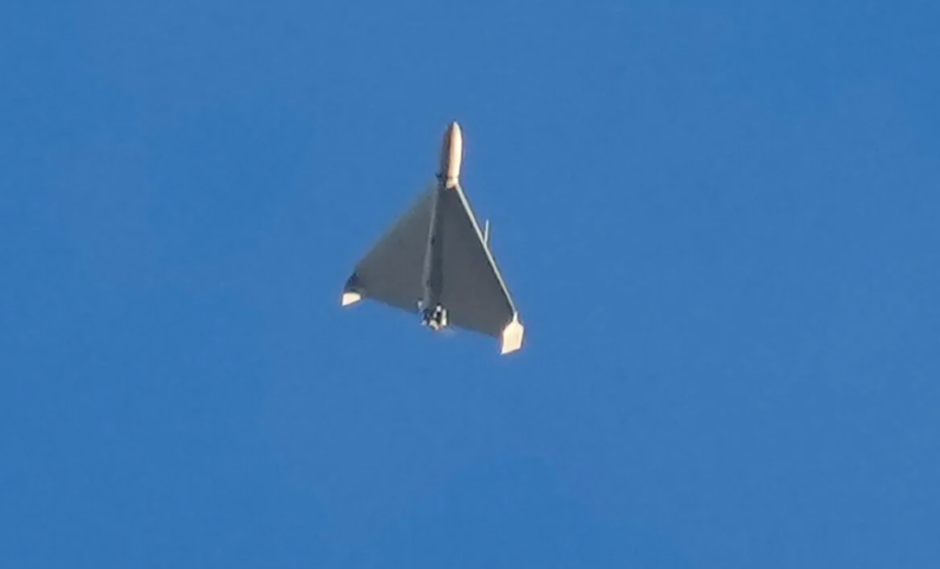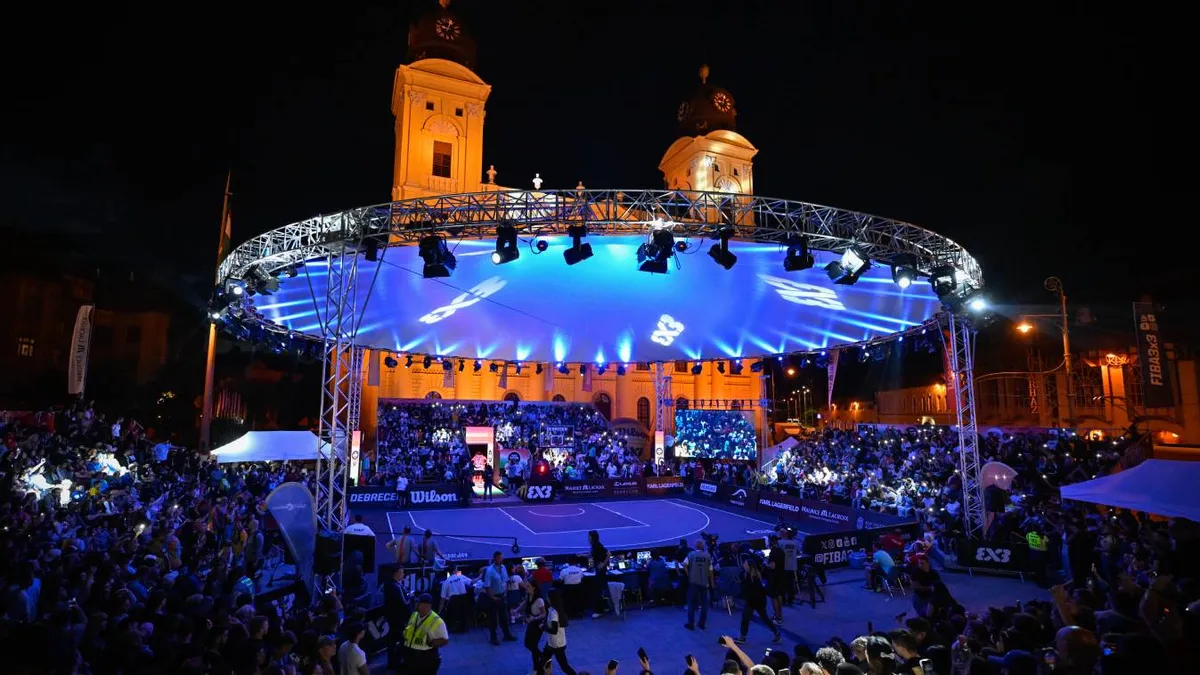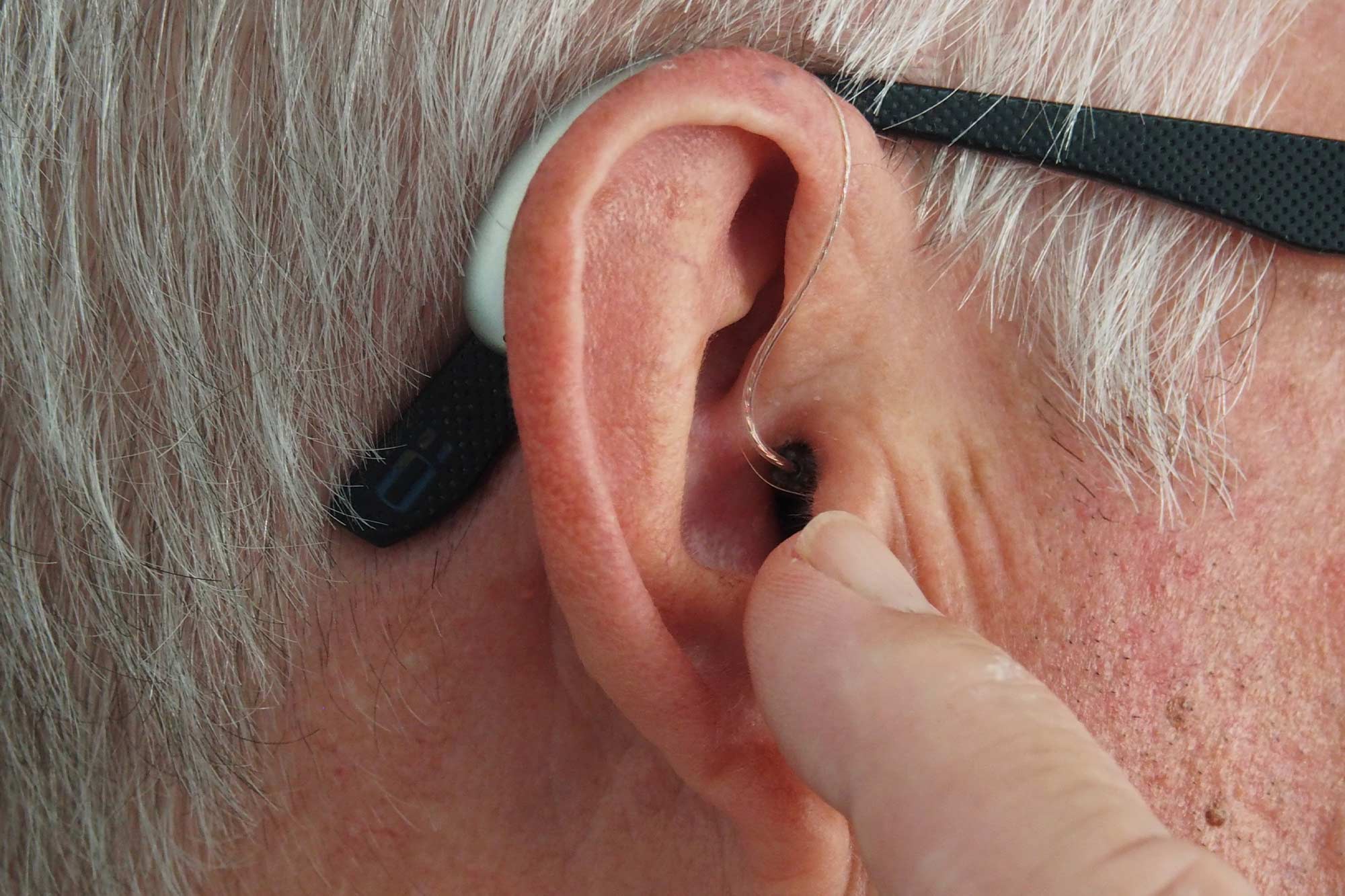In four hours, we succeeded in what took NASA several years: building the Martian rover Perseverance and its loyal companion, the Ingenuity Helicopter. It’s true that the Lego models we’ve put together don’t have to travel hundreds of millions of kilometers, survive a fearsome 7-minute airdrop, search for traces of ancient life in the frozen Martian landscape, and make history with the first motorized flight into another planet’s atmosphere. .
A few weeks ago, the Lego Group presented a 1:10 scale technic kit for modeling two spacecraft, in collaboration with the US Space Agency, which designs and operates the two probes, with the Jet Propulsion Laboratory (JPL) Research Institute. together Created – JPL engineers have reported to the toy factory about the probes that have been working in Mars’ Jezero crater since February 2021. We were curious to see how similar the models are to the probes, especially since Perseverance is the most complex robot NASA has ever sent to another planet, and it’s full of lab stuff Jet propulsion as usual. hidden And less subtle with messages.
photo_camera
Perseverance and creativity at Lego on the Badlands
Photo: Zsuzsi Kun
Therefore, after the set of 1132 pieces from Lego arrived for testing, we did not postpone assembling and testing it. In the medium-sized box, the items are separated into separate bags for each assembly stage, so we have to find the part we need from fewer parts. Unlike some Technic kits, these models do not have a motor drive, instead only a few parts can be moved. The thick evidence may be intimidating at first, but the Martians rolling down the bar below assure us we’re making progress on the build, which we started around 11am in the Qubit editorial office.
The first step is assembling the Creation, whose two huge rotors, necessary for flight in the scarce Martian atmosphere, dwarf all other components, even the solar panel on top. Perseverance, the helicopter that travels to Mars, took off for the first time in April 2021, followed by increasingly daring flights. Since then, the technology exhibitor, which was originally planned for a one-month test period, has passed the 51st day. Also in flightand still works.
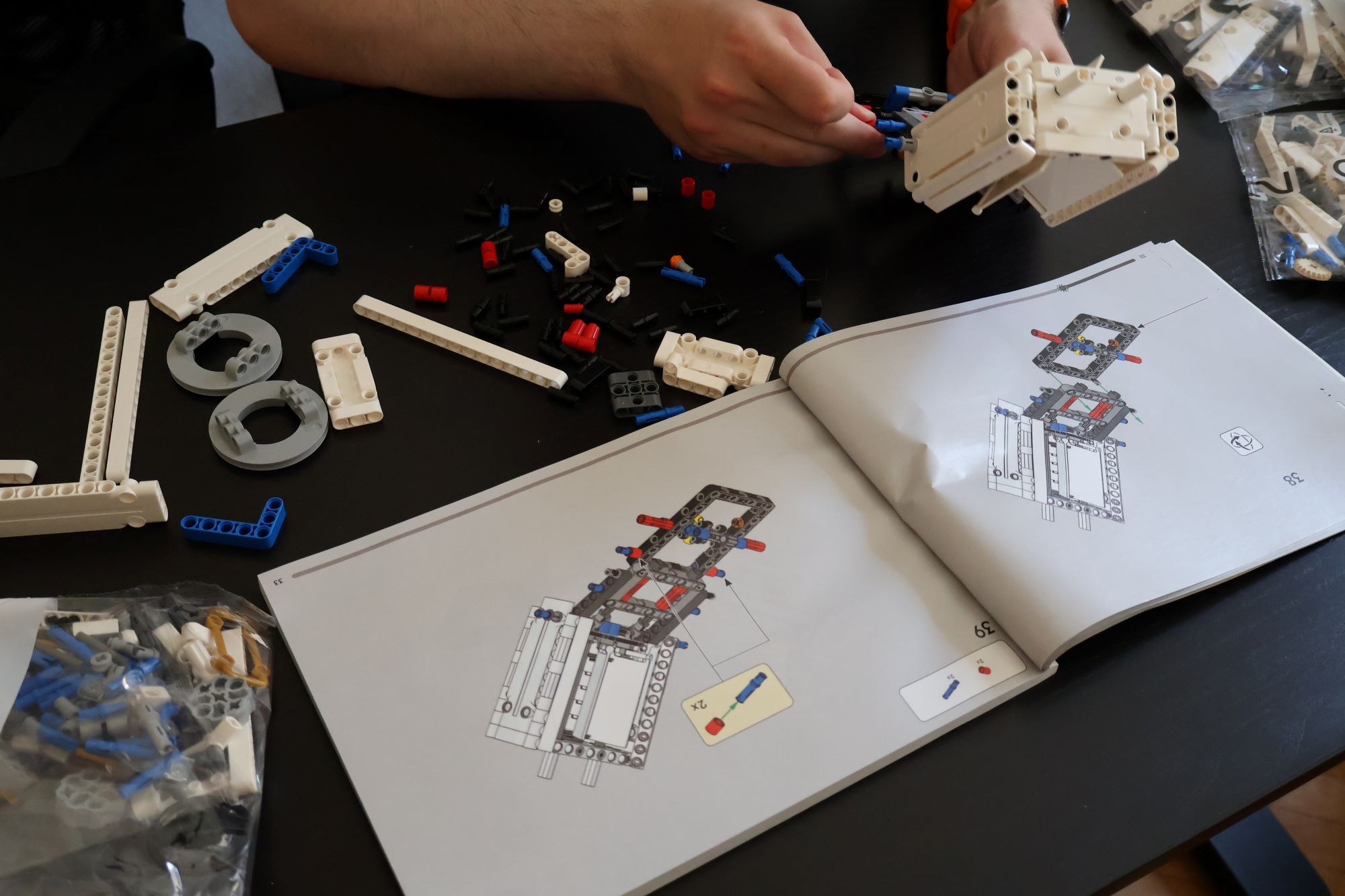
photo_camera
We were still at the beginning of construction here
Photo: Zsuzsi Kun
After the helicopter, we start the rover itself, of which we need the vast majority of 1132 elements. First, we assembled the unit that stands for the RTG that supplies electricity and heat to the Perseverance, and the structural elements around it, and then came one of the most time-consuming parts, the rover’s “body,” i.e., a box containing its electronics and computers. sample storage system. The mechanics run through this in the model we can spin the wheels through the suspension which will be finalized in the next build phase.
By moving the control button at the top of the model, we can choose to switch the front and rear wheels to 360-degree rotation mode, which allows the rover to rotate in one place, around its axis, or to normal mode, where we want to turn it like a car. Once the wheels were installed, it was time to assemble the Perseverance mast, which was replaced by the zoomable panoramic MASTCAM-Z cameras and the SuperCam laser spectrometer, which could be used to determine rock formation. The cameras were followed by a UHF antenna for communication with orbiters around Mars, as well as a high-gain antenna for direct communication with Earth.
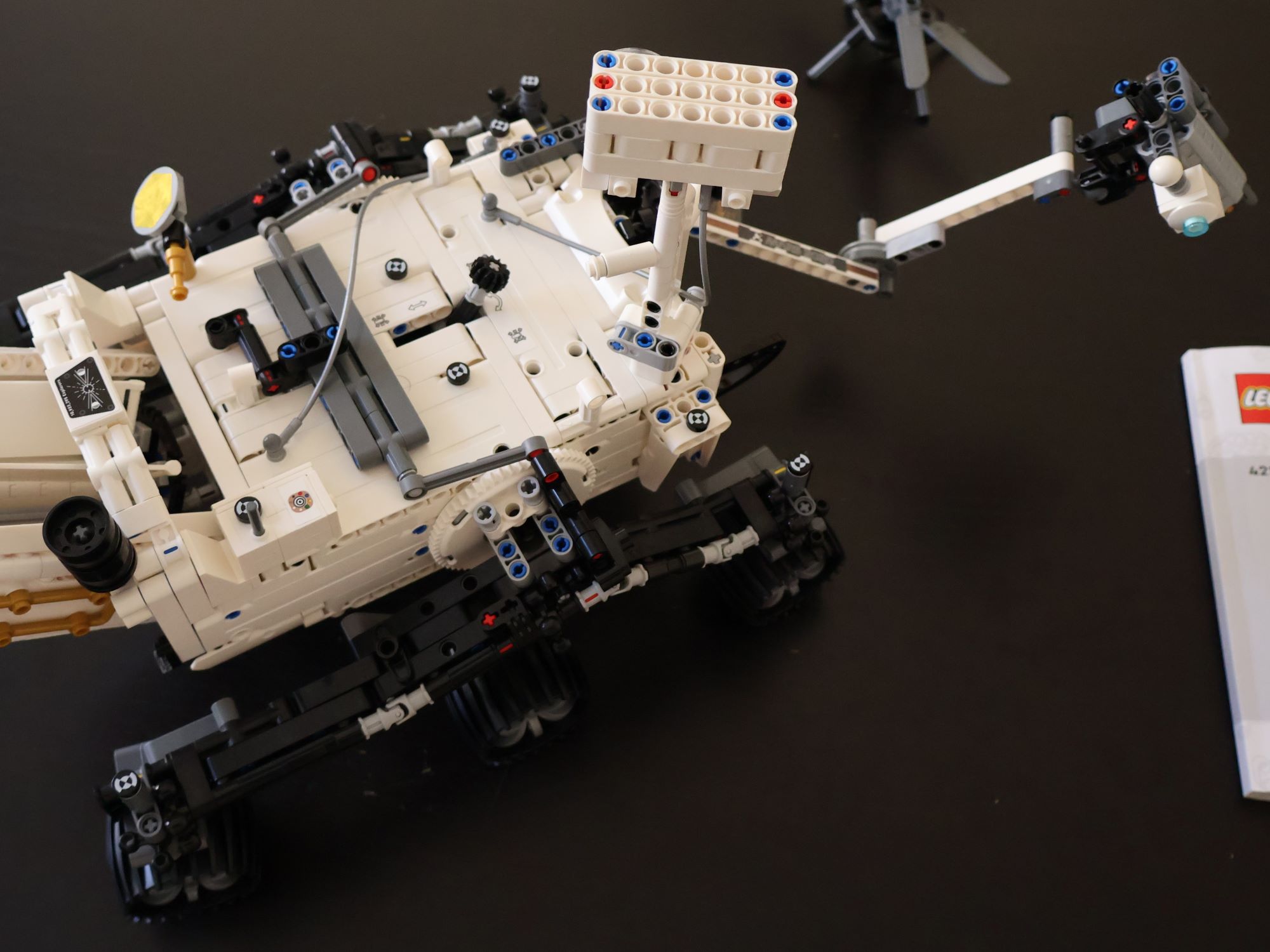
photo_camera
Antennas, calibration points, and a sundial atop the rover
Photo: Zsuzsi Kun
The most important part of Perseverance, the robotic arm, with which the rover takes samples of Martian rocks so subsequent missions can bring them back for analysis in laboratories on Earth, has finally survived. On a real Mars rover, in addition to the drill, two tools, PIXL and SHERLOC, help reveal the smallest details of the rocks and particles hidden in them. Once we place the robot arm next to the model’s greatly simplified sample-handling structure, we can move it left-to-right and up-down using the elements on the RTG, and at the same time we can congratulate ourselves that we’ve reached the end of the assembly.
The completed model cannot be called small: it is 32 cm long, 23 cm wide and the same in height. We got to this point around 3pm so 2 people could easily put together the group in 4-5 hours.
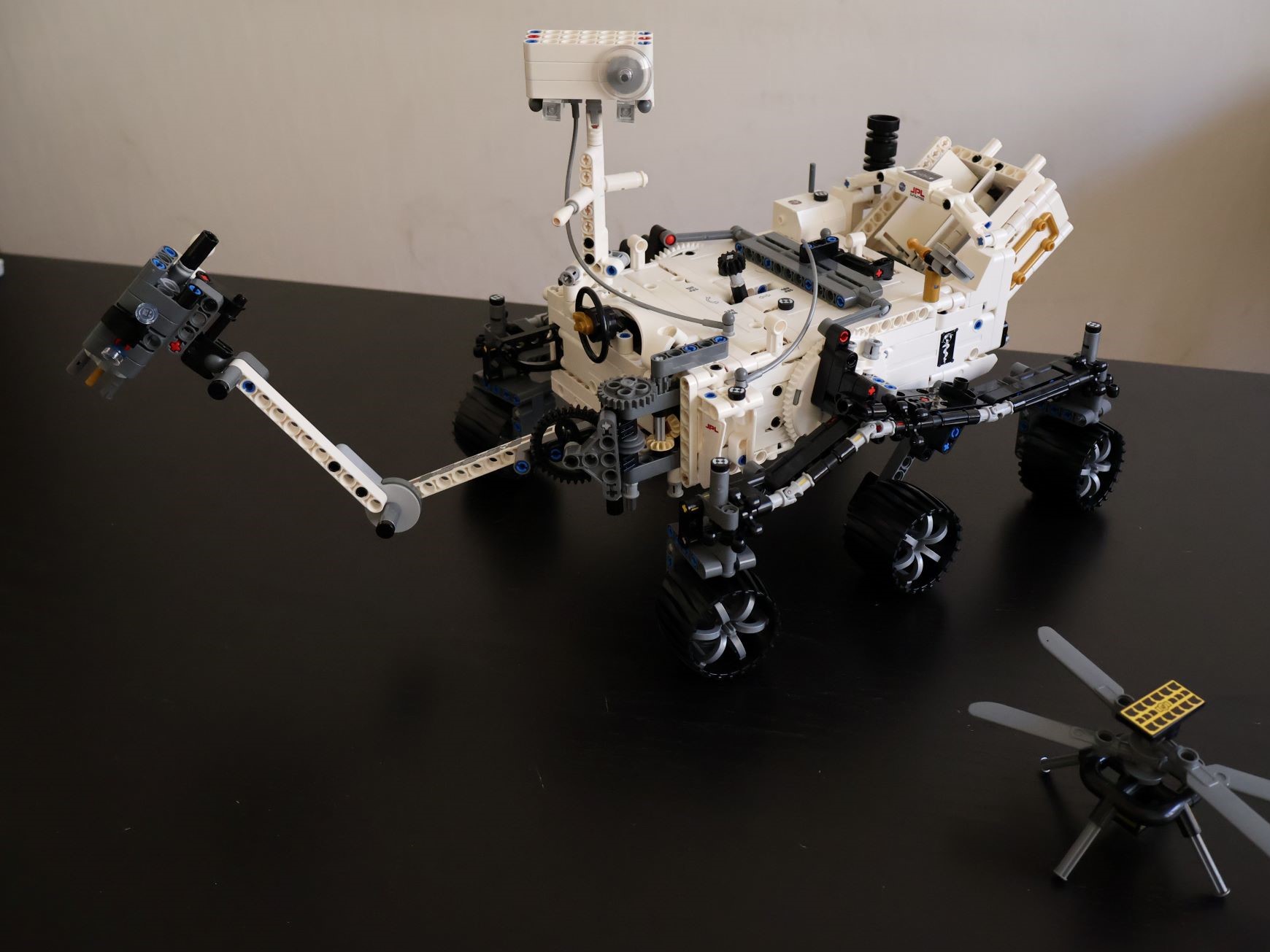
photo_camera
Finished!
Photo: Zsuzsi Kun
The good news is that you don’t need to be a Lego fan to get it right – the instructions are easy to follow, and we only had to take something apart once or twice. However, it is worth paying attention to the fact that it is sometimes difficult to distinguish between transparent, white and gray-white elements in the manual. Lego also seems to have taken care of the smallest details of perseverance. The model contains the front and rear cameras, called Hazcams, that warn the real rover of obstacles and hazards while taxiing, but also calibration targets placed for the cameras on different parts of the rover. Additionally, stickers can be placed on the Lego Mars rover for a color-coded sundial, as well as countless NASA logos and graphics placed on the Perseverance, including the Covid pandemic. memorial Council too.
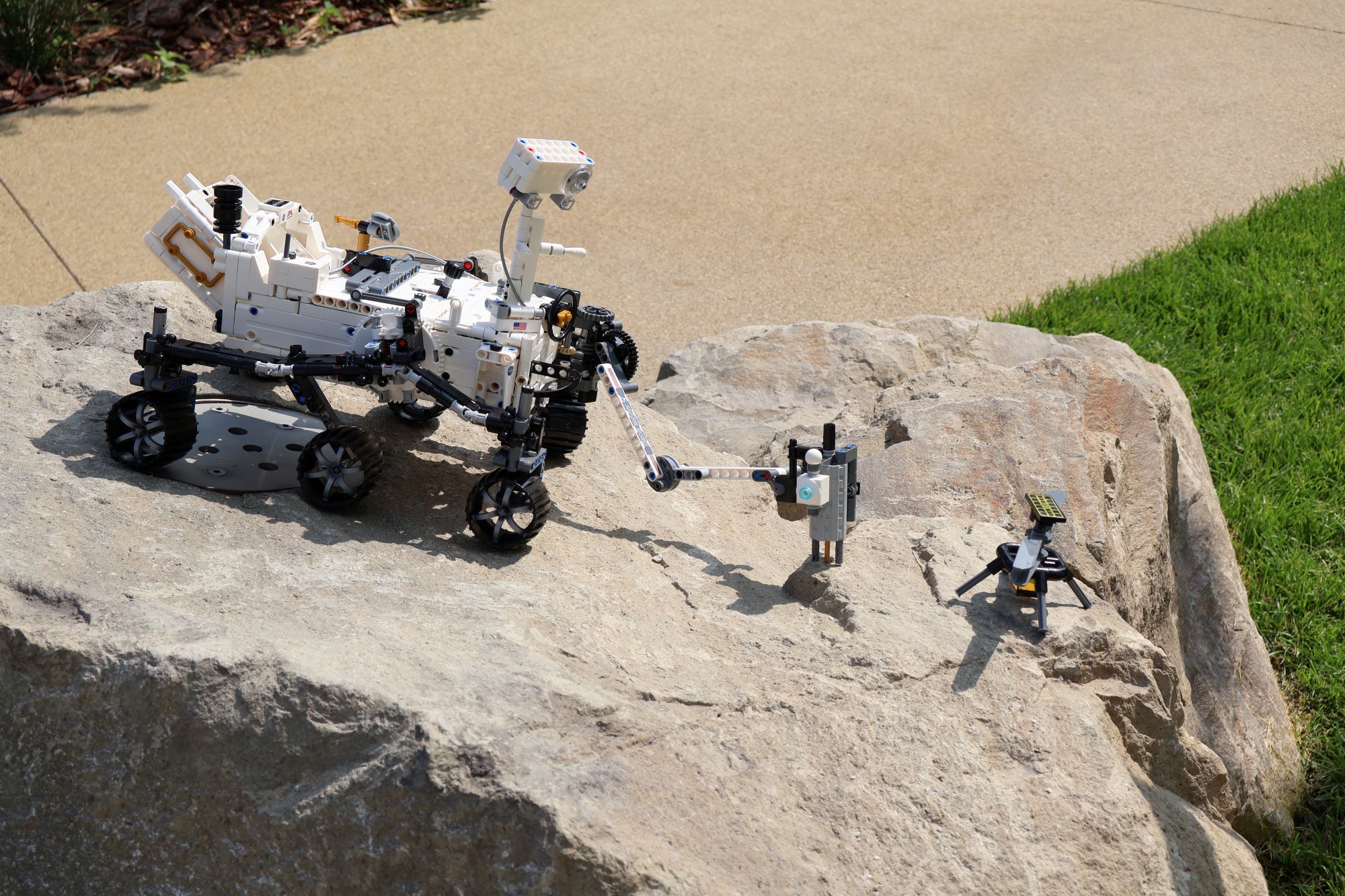
photo_camera
We tested the models in almost Mars-like conditions
Photo: Zsuzsi Kun
All that was left was to test the rover and its helicopter, so we took them to a nearby park. The soft cover on the wheels of Perseverance was more sympathetic than the editorial offices, but don’t expect a lot of suspension to handle snags. We “dug” a rock with the arm of a mobile robot, and then also checked how durable the model was: if we dropped it from a few centimeters, it could easily withstand it, and the batteries did not start falling on it.
Finally, we tried Lego’s augmented reality app for smartphones called Technic AR, which worked well during our short test. After scanning about perseverance is iOSand and android With the app available to the devices, we can learn about the missions of the rover’s components, excavate virtual Martian rocks and learn about the Martian environment. Since we can’t easily build other models out of collection items, how much we play with the rover after assembly depends largely on the capabilities and content of the application.
June in Hungary Available from the startThe set, recommended for ages 10 and up, costs 40,000 HUF, and Lego hopes to encourage children to explore engineering. Lori Leshin, who heads the Jet Propulsion Laboratory according to At the institute, they dream big and push boundaries to find answers to science’s most exciting questions. As he said, “I hope that games like this will instill in children the same sense of grandeur of discovery that we feel at the NASA research facility at the Jet Propulsion Laboratory.”
Related articles on Qubit:












